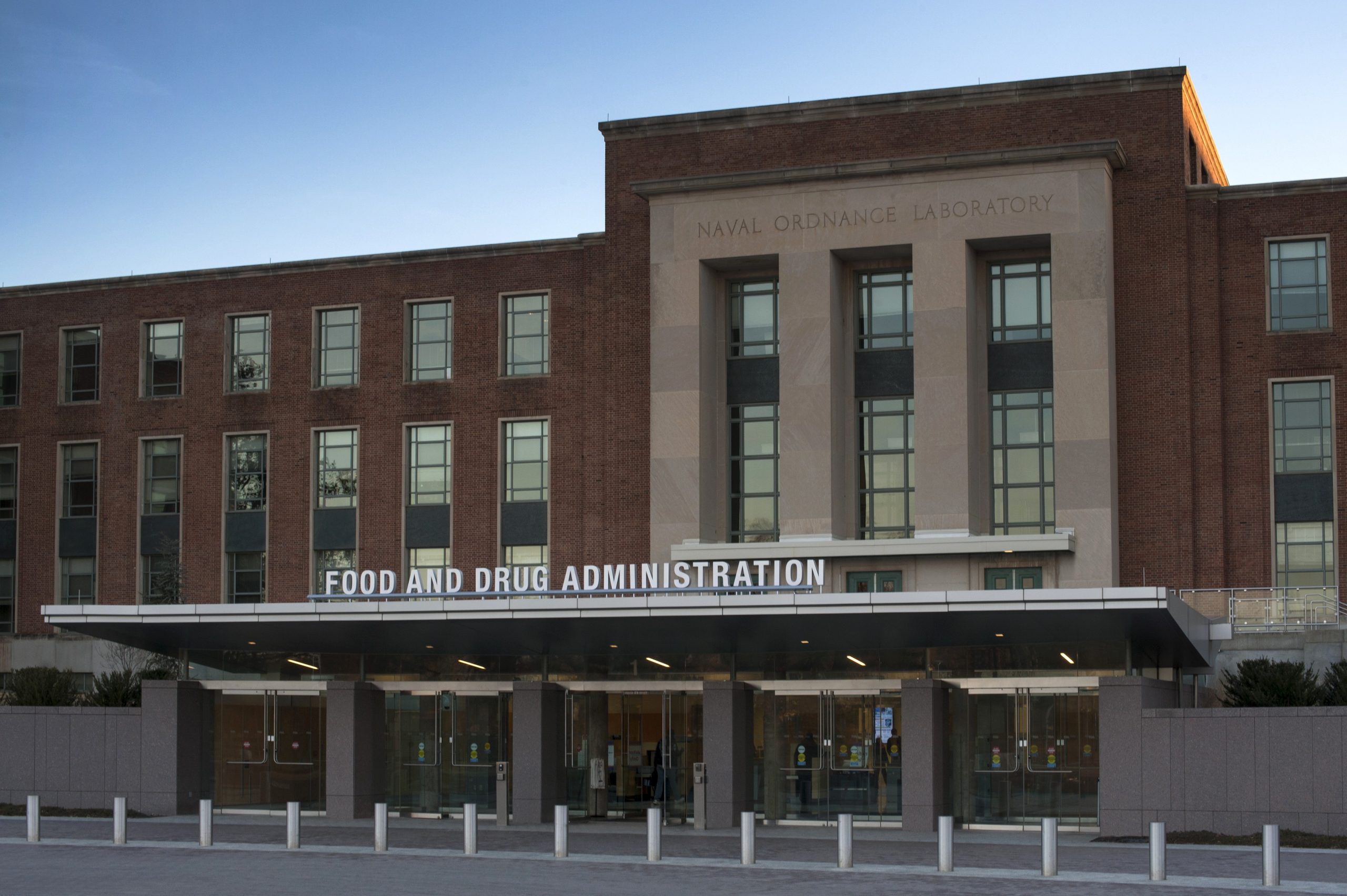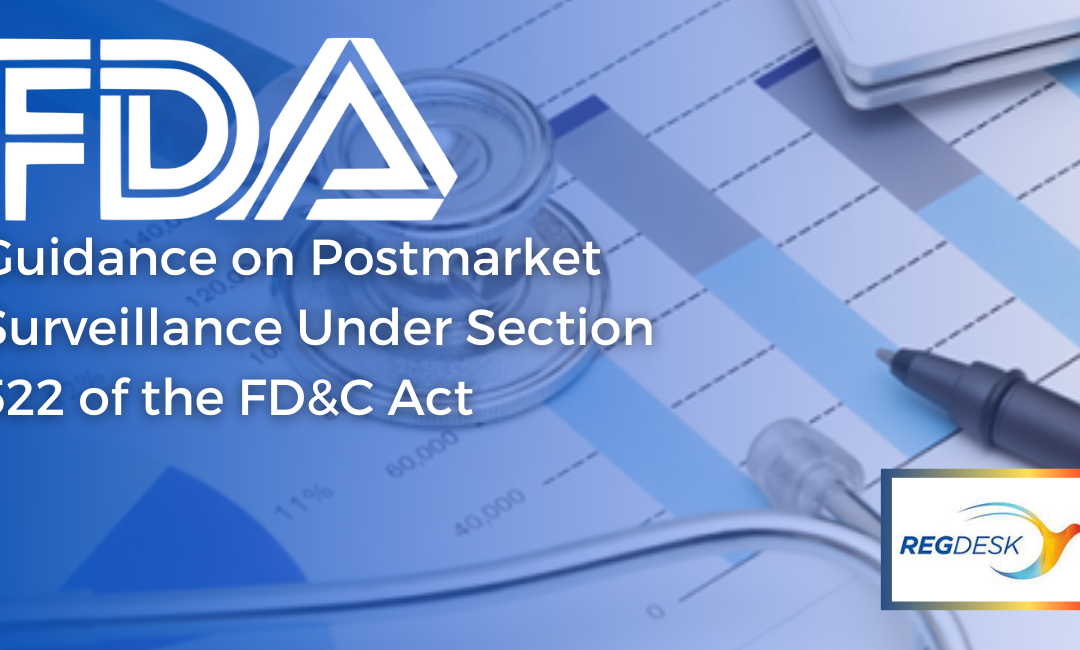The Food and Drug Administration (FDA or the Agency), the US regulating authority in the sphere of medical devices, has published draft guidance describing the suggested approach for postmarket surveillance to be performed under Section 522 of the Federal Food, Drug, and Cosmetic (FD&C) Act – the county’s main regulation for medical devices and other healthcare products.

The present document reflects the current position of the regulating authority and has been published in order to commence public consultation and collect feedback and suggestions from industry representatives and other parties involved. The FDA will accept comments on the matter within 60 calendar days from the date the document was officially published. Thus, the approach described in the present draft guidance could be subject to changes based on the feedback obtained.
Once finalized, the document will replace existing guidance on the same matter issued by the authority earlier in May 2016. As with any guidance issued by the FDA, an alternative approach could be applied, provided it complies with the applicable regulatory requirements and has been approved by the authority in advance.
In general, the document is intended to provide:
- An overview of the applicable regulatory requirements;
- Recommendations on the way postmarket surveillance should be performed;
- Clarifications on the communications and reporting format;
- Details on surveillance status categories.
The document also describes the aspects related to 522 postmarket surveillance orders the FDA is entitled to issue.
Regulatory Background
According to Section 552 of the FD&C Act, the regulating authority is entitled to require manufacturers to conduct postmarket surveillance at the time of approval or clearance or at any time thereafter of certain class II or class III devices. For the purpose of the guidance, the concept of “postmarket surveillance” covers activity related to the collection and analysis of data related to medical devices already placed on the market in order to identify issues related to safety and performance.
If the regulating authority identifies potential issues related to medical devices marketed in the US, it will commence an additional review to determine whether a 522 order is necessary.
According to the aforementioned regulation, the Agency may require the manufacturer to carry out postmarket surveillance in the following cases related to class II and class III medical devices:
- A failure of a medical device could potentially result in serious consequences for the health of a person using it;
- A medical device in question will be actively used for pediatric patients;
- A medical device is intended to be implanted for more than one year;
- A medical device is a life-sustaining or life-supporting one, and is intended to be used outside a clinical setting.

522 Order
The issues listed above could be identified by the authority in different ways, including the analysis of reports submitted or corrective actions performed. The Agency states that additional actions could be requested by the FDA in order to:
- Collect additional information about the issue and all aspects associated thereto,
- Collect additional information on the way the device operates when used for its intended purpose,
- Collect the data necessary to evaluate the actual effectiveness of a medical device,
- Identify connections between the issues and medical devices, as well as any patterns in the way such issues occur.
In order to determine whether a 522 order is necessary, the Agency will take into consideration numerous aspects, including the following:
- Are the statutory criteria met?
- What is the public health question? The delineation of the public health question is the most important element discussed by the team.
- Is the public health issue device-specific or device type-specific?
- Is there any other source of data or action, or a combination thereof, that may be used to address the public health question instead of a 522 order?
- What combination of efforts should be considered to address the public health question? In addition, when applicable, what changes, if any, are being made with regard to the premarket review?
As mentioned, the FDA pays special attention to medical devices actively used for the pediatric population. The Agency additionally emphasizes the scope of this rule covers not only the medical devices initially intended for pediatric use but any and all medical devices that could be used in this context.
Once the decision has been taken, the FDA will issue a 522 order indicating the medical device(s) subject to the surveillance order, as well as the reasons for this. Additionally, an order will also provide recommendations to be considered by the medical device manufacturer when developing the postmarket surveillance plan. In certain cases, the FDA may also prescribe specific timelines for the particular actions to be taken by the medical device manufacturer.
Such an order could be issued at various stages of a product lifecycle, starting from the initial review and approval.

Postmarket Surveillance Plan
According to the applicable regulation, the medical device manufacturer is obliged to develop and submit the appropriate postmarket surveillance plan to the regulating authority not later than 30 days from the date the 522 order is issued. Another timeline relates to the actual implementation of the postmarket surveillance plan – the appropriate actions should be taken within 15 months from the date the order is issued. The commencement date of postmarket surveillance is determined by the date when the first subject of the study is enrolled or the date when data accrual started – for postmarket surveillance that does not require an actual enrolment of subjects.
The present FDA guidance outlines the following timelines to be calculated from the date the 522 order has is issued:
- Study commenced within 15 months,
- 20% of subjects enrolled within 18 months,
- 50% of subjects enrolled within 21 months,
- 100% of subjects enrolled within 24 months.
Each 522 order issued by the Agency will have its own postmarket surveillance (PS) number, which should be used for references in all communications related to the postmarket surveillance plan and further activities associated thereto. The same applies if there are several postmarket surveillance plans developed due to the specific features of the subject matter.
As mentioned, the FDA will review the postmarket surveillance plan submitted by the medical device manufacturer and provide its response within 60 calendar days. However, the Agency will attempt to respond within 30 days.
With regard to the content of a postmarket surveillance plan, the guidance refers to 21 CFR 822.9. In accordance with the aforementioned regulation, a postmarket surveillance plan shall contain the following elements:
- Objectives,
- Description of the approach or methodology used,
- Subject of the study,
- Variables and endpoints,
- Sample size,
- Details on the data source and data collection plan and forms,
- Patient follow-up plan or schedule,
- Indications of data analysis and statistical tests to be performed,
- Description of monitoring procedures, and
- Content and timing of the Postmarket Surveillance Reports.
In summary, the present FDA draft guidance describes the suggested approach to postmarket surveillance activity to be performed on the basis of a 522 order issued by the Agency. In particular, the document outlines the factors to be considered by the regulating authority when determining the necessity of additional postmarket surveillance, as well as the applicable timelines.
Sources:
How Can RegDesk Help?
RegDesk is a next-generation web-based software for medical device and IVD companies. Our cutting-edge platform uses machine learning to provide regulatory intelligence, application preparation, submission, and approvals management globally. Our clients also have access to our network of over 4000 compliance experts worldwide to obtain verification on critical questions. Applications that normally take 6 months to prepare can now be prepared within 6 days using RegDesk Dash(TM). Global expansion has never been this simple.

